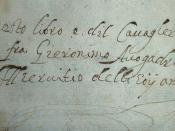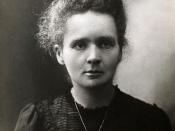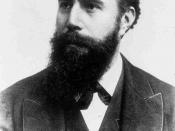Arrhenius, Svante -- (Swedish Chemist) p 172-3, 468, 470. Known for work with acids and bases. Defined acids and bases in terms of their behavior when dissolved in water. Also suggested that rate constants vary exponentially with inverse temperature, and that for molecules to react upon collision they must become activated", introducing the parameter Ea became known as the activation energy.
Aspdin, Joseph -- (British bricklayer), 827. Patented a product called portland cement that was used in the process for calcining a mixture of limestone and clay. When mixed with water, it hardened to a materical that resembled a kind of limestone found on the Isle of Portland. This product is now used worldwide.
Aston, Francis W. -- (British chemist and physicist) 24. Developed technique of mass spectrometry as extension of the measurement of the charge-mass ratio of the electron. The relative masses on the atomic scale are related to absolute mass on the gram scale through a conversion factor.
Mass spec is now the most accurate method for determining relative atomic and molecular masses.
Avogadro, Amedo -- (Italian chemist) 13-15. Famous for his well-known postulate known as Avogadro's hypothesis, "Equal volumes of different gases (at the same temperature and pressure) contain equal numbers of particles." His work explained much of the previous work by several different chemists. His work was rewarded by the naming of an important constant, Avogadro's number, N0 = 6.022137 x 1023 Balmer, Johann Jakob -- (German chemist) 534. Discovered in 1885 that hydrogen atoms emit a series of lines in the visible region, with frequencies given by a simple formula. His work was not explained for over 30 years.
Bartlett, Neil -- (American chemist) 94p, 800-1, 805p. Found in 1965 that by the exposure of sunlight, the thought to be chemically inert noble gases would...


